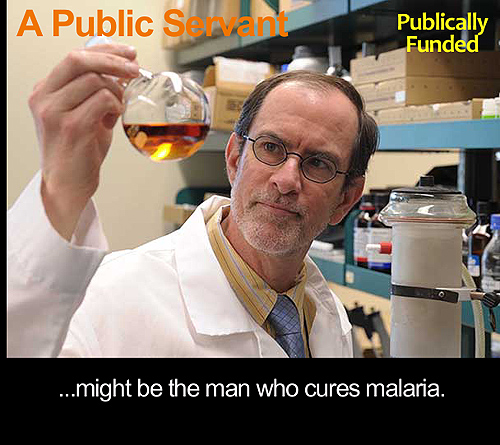
The breakthrough is exciting, because it came from out of the blue. We’ve been watching a number of malaria medicines and other strategies develop over the last several years, and this was not on the watch list.
It wasn’t on the watch list, because it comes remarkably from a not-for-profit, the Switzerland-based Medicines for Malaria and not from one of the world’s major pharmaceuticals, all of which have been working feverishly on achieving results that the creators of this drug believe they have accomplished.
Neither the Gates foundations or WHO or other major malaria fighting organizations were involved. It was the small Swiss not-for-profit, America’s National Institute of Health, an experimental lab at the Oregon Health & Science University and the Portland VA Medical Center.
These are not your normal worldwide players in major drugs. And kudus to them! These are … to put it mildly … social government institutions hurting from sequestration! They are examples of why government is necessary, and big government can be good government.
“We believe ELQ-300 has a chance to change the landscape of how we fight malaria across the world,” said Michael Riscoe, Ph.D., principal investigator in the research, a professor of molecular microbiology and immunology at OHSU and director of the Experimental Chemotherapy Lab at the Portland VA Medical Center.
Malaria is a highly complex disease with nine distinct stages, four in the mosquito and five in the victim, us. Virtually all previous drugs targeted one stage to disrupt the advance of the disease.
As published in the March 20 issue of Science of Translational Medicine ELQ-300 (or “Quinolone” as it’s likely to be called) targets multiple stages, finds the parasite long before other medicines detect it, can be used for both treatment and prevention with a single dose, and is inexpensive.
March 20? More than two months ago?
I can’t figure out why this news took so long to surface. The scientific report came out in late March, but worldwide media did not pick it up until last week.
When giant foundations and major multinational pharmaceuticals are involved, it can tempt one into all sorts of conspiracy theories. One wonders, for example, which multinational pharmaceutical will ultimately manufacture the drug and under what conditions.
But we may be jumping the gun. Human trials in Africa are only beginning.
But of all the malaria news I peruse, this looks extremely promising.